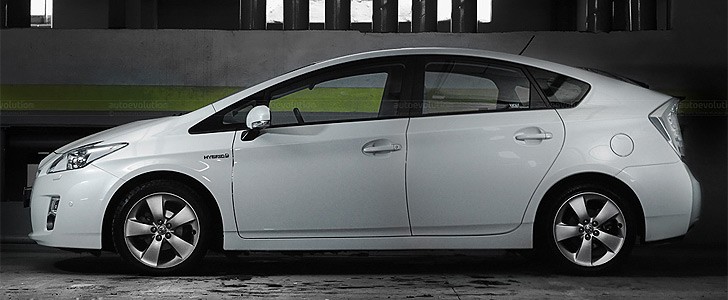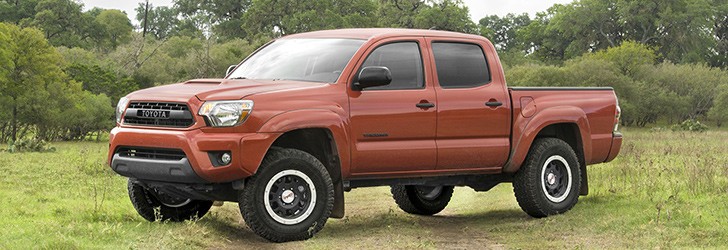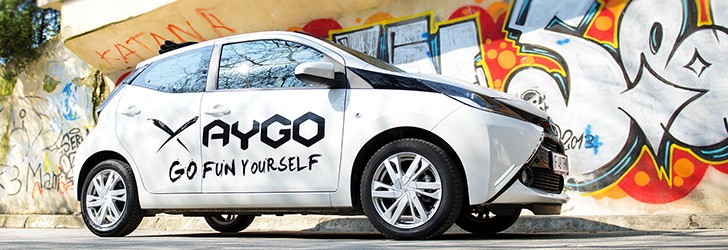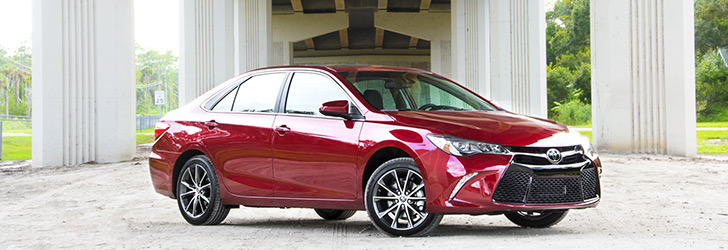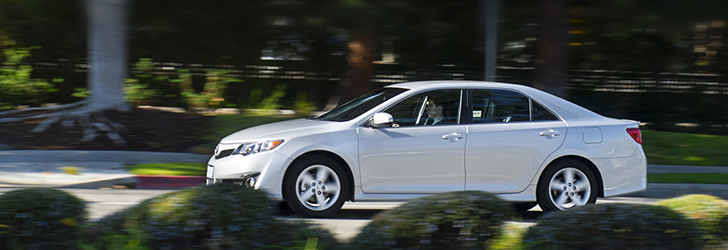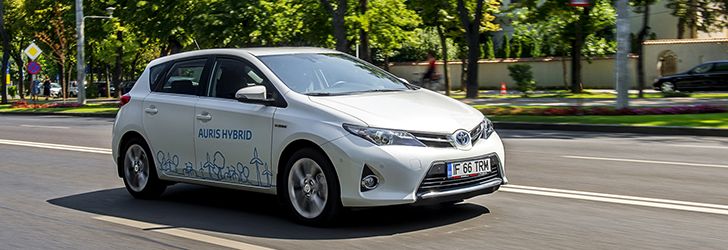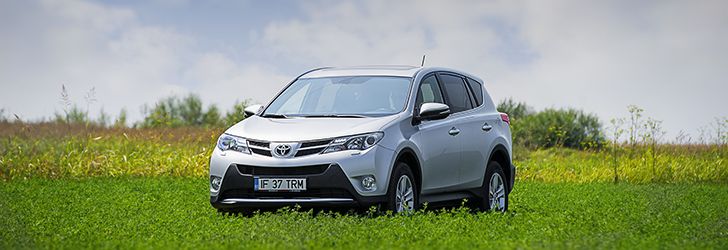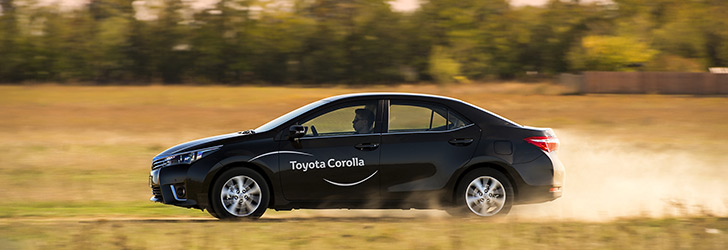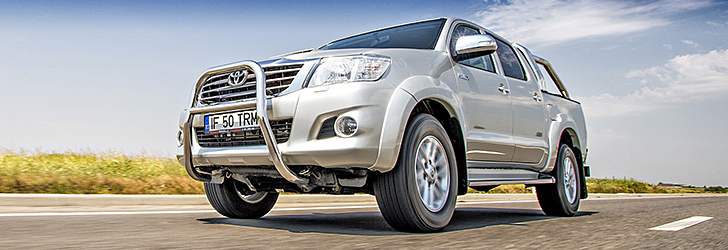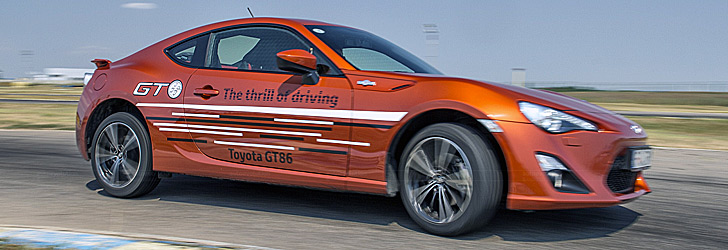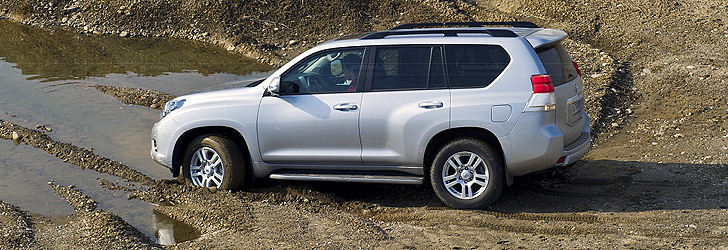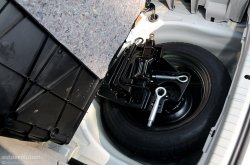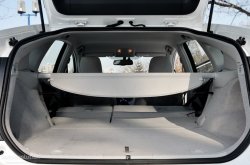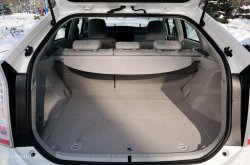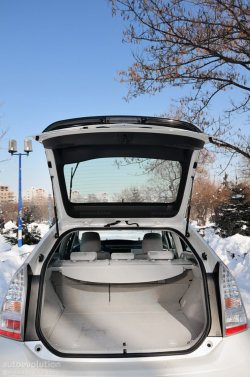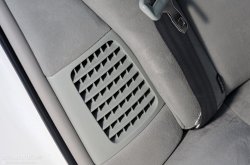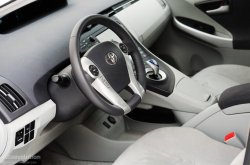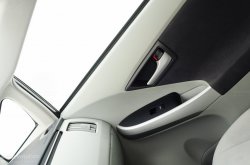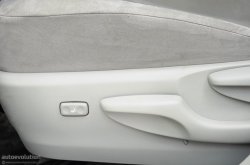TOYOTA Prius Review
OUR TEST CAR: Toyota Prius Hybrid
Back in the late nineteenth and the early twentieth century, a man which many of you know for being later responsible for a number of innovations at Mercedes-Benz and Auto Union, the first Volkswagen and the Porsche brand, was putting his genius to good work and creating the world's first working hybrid. Yes, we're talking about Ferdinand Porsche, probably the best automotive engineer in history.
Well, the funny thing is that almost a hundred years passed until a hybrid car actually went into mass production. Why the long delay? Well, probably because for the most part of the twentieth century, petroleum was almost as cheap and as wide spread as water. Nevertheless, petrol has become increasingly scarce and expensive, while the quality of air in the cities is getting worse "thanks" to the larger number of vehicles on the road.
Even though a bunch of other car manufacturers tried their luck at pursuing advancements in hybrid technology over the years, the darn thing didn't caught on and was eventually shelved. Then, back in 1992, none other than Toyota announced that one of its short-term goals is to develop and market a car that would retain all the benefits of modern vehicles while having much lower emissions. They were the first manufacturer with real "cojones" in the hybrid area.
A Toyota engineer, called Takehisa Yaegashi (now called Mr. Hybrid), was given the task to conduct a team that creates a car to "bridge the gap between electric and petrol-powered vehicles." So he did. As soon as the 1995 Tokio Motor Show, the Toyota Prius Concept was launched. A year later it began testing, and in late 1997 the first generation of the production car was launched in Japan.
Here we are, almost thirteen years and three generations later, with the latest Toyota Prius. Launched at the 2009 North American Auto Show (NAIAS), but destined for a global market, the third generation of the Prius is the first one that not only delivers all the benefits of a modern vehicle, but it also does it while giving its owners a feeling of driving something from the future.
We took a medium-specced European Prius to the test, only to find out how much it has evolved since its first generation, but also how far it is from an old-school, regular car. This is probably the closest thing to driving something from the near future, only that it's here, today. You will learn about both of our good and bad conclusions further on, so keep reading.
Many Prius fans might attribute its weird wedge shape to the aerodynamic benefits it provides. Toyota engineers also agree with this fact, since the third generation of the Prius is also one of the most aerodynamically efficient production cars. With a drag coefficient of 0.25, that "flat pancake" shape actually has a purpose. So, you can not call it simply ugly, it's more like "form follows function".
Of course, other manufacturers are achieving similar drag coefficient results without appealing to such extreme styling. On the other hand, Toyota knows that the Prius's shape has transformed into a real attention-grabber for the environmentally-conscious driving one, so it's also good PR, not just Cd, behind the turtle look.
The front is actually pretty good-looking, even though it retains quite a lot of design cues from other modern bland Toyotas. Still, it's a mixture between your average boring Toyota look and a more youthful and especially sportier appearance. This was further amplified by the seventeen-inch alloy wheels, which look very "autobahn-ready". The main design feature separating it from its siblings is the blue hue inside the badge, which is Toyota's geeky way of differentiating its hybrids from the regular models in the lineup.
Getting to the side of the Prius is where things get messy. The car's profile is pretty much its main way of announcing with trumpets, confetti and firecrackers the fact that it's a hybrid. Which is both a good and a bad thing. Good for all the environmentalists who cannot tell a car from a vacuum cleaner and bad for all the real car guys out there. On a personal note, we think the side is an absolute hideous representation of a correct Kamback design.
The rear is pretty non-homogeneous also, with the twin rear windshield and the tall Lexus IS/Toyota Altezza taillights. The rear bumper, on the other hand, looks more like an aftermarket "tuner" option that a productions-specced piece. All in all, the opinions about the way the Prius looks are pretty divided and that is why we can give it neither a top mark, nor a very low one.
Any Star Trek fan, especially of "The next generation" series, would probably feel at home in the Prius. Everything, from the way the center console "flows" all the way between the front seats to the odd gray upholstery looks and feels like it's from the 1990s Sci-Fi movie-set.
The interior design is destined to appeal to pretty much every inner geek in you using both design and the hi-tech features available. As far as the ergonomics involved, we have to say that this is probably the first time when we don't find a center-mounted speedometer too weird or hard to follow. This probably because, unlike on the Citroen C4 we tested last year, for example, the numbers are very clear thanks to a mellow holographic effect of the center display.
The holographic effect is even more persistent on the head-up display, which can show the driver his current speed and the way the means of propulsion work in the car (the ICE, the battery level and the electric engine) at any given time. Plus, the position of the HUD can be conveniently changed from just a push of a button near the steering wheel, so both taller and shorter drivers can be properly accommodated.
The interior space is rather large for such a compact car, with more than enough leg room for all four (or even five) passengers. The head room is above-average for the front passengers, but the way the roof gets lower towards the rear can crash the party for your taller passengers. It's not cramped back there, but more like "adequate" when it comes to headroom.
The luggage compartment is very roomy and has one of the best entries of any hatchback we tested, since the hatch is very wide and low. The rear seats can also laid completely flat in a 60:40 in order to enlarge the total trunk capacity from 445 liters (15.7 cubic feet) to over 1000 liters (35.3 cubic feet).
As far as the quality of materials used inside, Toyota managed to surprise us by adding a new range of plant-derived ecological bio-plastics that actually don't feel crappy at all. Most of the interior plastics are made from cellulose found in wood or grass instead of petroleum-derived substances. In other words, whenever someone brags about their expensive wood inserts in their car you can always say that your Prius's interior is mostly made out of kenaf (a type of hibiscus) and ramie (or "China grass", as some people know it).
A hybrid car with a battery pack powerful enough to sustain electric-only driving at city speeds and for a rather prolonged time can mean nothing but heaven for smog haters all over the world. In theory, you can drive for about 10-15 kilometers (6-9 miles) at speeds of up to 50 km/h (30 mph) using nothing but electric power from the NiMh batteries under the luggage compartment.
As in most other "practice beats theory" games, in real life this can't be reproduced number for number, mostly because traffic in the city isn't as smooth as some Toyota marketing guys would lead you to believe. Plus, during our city test drive we also encountered lots of snow and cold weather, which might have downgraded the battery's life as fell. Still, even so, in an evening without too much traffic and a taking a few shortcuts through some back roads, we managed to drive the Prius in EV mode for about eight kilometers (five miles).
We can't say that official numbers can't be reproduced in real life, but it does take some skill since the all-electric mode also has some downsides. For example, even if you've previously selected all-electric mode, you'd have to be really careful with the acceleration pedal, gently depressing it like it's a soft part of your body in order for the ICE (internal combustion engine) to remain shut down and use no fuel. Moreover, the air conditioning unit, the headlights and the audio system should be used as little as possible in order for the batteries to preserve their juice.
During our city part of the test drive, the closest we got to the official fuel consumption was 6.2 liters per 100 kilometers (US 37.9 mpg), while the total average was 7.3 liters per 100 km (US 32.2 mpg). Each of these are simply outstanding figures for a car this size which is filled with gasoline at the pump, but both are rather far from the official 4 liters per 100 km (US 58.8 mpg). In the Prius's defense we should probably say that the driving conditions during our test were snowy and with really bad traffic, to say the least.
As for the overall visibility, there are good parts and there are bad parts. The exterior rear view mirrors are huge, while the window area is enormous for a car this size. On the downside, the vertical part of the split rear-windshield doesn't have a wiper and gets dirty the most due to the Kammback design of the rear.
As for the optional Intelligent Park Assist System our test car was fitted with, it also has advantages and disadvantages. The advantages are obvious – you can park without touching anything but the brake, be it lateral or reverse parking. After selecting reverse, the back-up camera becomes active and you can virtually select using arrows on the touchscreen the place where you want the car to automatically park.
The disadvantage is mainly the fact that the whole process takes forever and you're probably better left parking by yourself. Second of all, believe it or not, except for the two parking sonars on the two frontal corners of the car, our Prius wasn't equipped with parking sensors. This pretty much means you can easily bump your car against others in the parking lot if you don't approximate the correct size of the space you're about to occupy.
All in all, apart from a few visibility disadvantages, the Prius is one of the best city grocery-getters we've tested so far, managing to impress us at almost every sub-chapter from the city part of our test drive.
Although we were expecting a regular, boring, Toyota-like ride, we have to say that we were a bit surprised of how good the Prius handled in the "Open Road" section of our test drive. Whether it was the 17-inch wheels with low tire walls, the nice suspension setup or the low center of gravity (actually, more like all of these factors contributed), the end result was much better than expected. The steering wasn't half bad either when it comes to feel, especially considering it's electric, not hydraulic.
The combined power output of both the electrical engine and the ICE (internal combustion engine) is a somewhat adequate 136 horsepower. This translates into a naught to 100 km/h (62 mph) time of 10.4 seconds, which is pretty normal, while the top speed is a rather low 180 km/h (112 mph). We say low mainly because the Prius' top speed should also be helped by the amazing aerodynamic drag coefficient of only 0.25, but apparently it isn't.
Although the Prius also benefits from the ginormous torque of an electrical engine, its mid-range pull doesn't seem all that special. That is probably because the 400 Nm (295 lb ft) of "electrical" torque are only available from 0 to 1200 rpm, while the so-called transmission is behaving like a totally non-sporty CVT, delaying "shifts" as much as possible in order to improve fuel economy at the expense of acceleration.
So, on the whole, the Prius can be used just like a regular car on the highway or during longer trips, since the comfort it provides is more than adequate for long-distance cruising. Also, by setting the standard cruise control at a highway speed you can gently cruise along for hundreds of miles. The fuel consumption will be around four liters per 100 kilometers (US 58.8 mpg) at a steady speed of 130 km/h (81 mph).
What we didn't like was its total lack of oomph during highway passing and the way the "transmission" works. Overall, it's not as horrendous as to make you use it exclusively in the city, since its qualities also recommend it for long distance driving.
Well, the funny thing is that almost a hundred years passed until a hybrid car actually went into mass production. Why the long delay? Well, probably because for the most part of the twentieth century, petroleum was almost as cheap and as wide spread as water. Nevertheless, petrol has become increasingly scarce and expensive, while the quality of air in the cities is getting worse "thanks" to the larger number of vehicles on the road.
Even though a bunch of other car manufacturers tried their luck at pursuing advancements in hybrid technology over the years, the darn thing didn't caught on and was eventually shelved. Then, back in 1992, none other than Toyota announced that one of its short-term goals is to develop and market a car that would retain all the benefits of modern vehicles while having much lower emissions. They were the first manufacturer with real "cojones" in the hybrid area.
A Toyota engineer, called Takehisa Yaegashi (now called Mr. Hybrid), was given the task to conduct a team that creates a car to "bridge the gap between electric and petrol-powered vehicles." So he did. As soon as the 1995 Tokio Motor Show, the Toyota Prius Concept was launched. A year later it began testing, and in late 1997 the first generation of the production car was launched in Japan.
Here we are, almost thirteen years and three generations later, with the latest Toyota Prius. Launched at the 2009 North American Auto Show (NAIAS), but destined for a global market, the third generation of the Prius is the first one that not only delivers all the benefits of a modern vehicle, but it also does it while giving its owners a feeling of driving something from the future.
We took a medium-specced European Prius to the test, only to find out how much it has evolved since its first generation, but also how far it is from an old-school, regular car. This is probably the closest thing to driving something from the near future, only that it's here, today. You will learn about both of our good and bad conclusions further on, so keep reading.
Many Prius fans might attribute its weird wedge shape to the aerodynamic benefits it provides. Toyota engineers also agree with this fact, since the third generation of the Prius is also one of the most aerodynamically efficient production cars. With a drag coefficient of 0.25, that "flat pancake" shape actually has a purpose. So, you can not call it simply ugly, it's more like "form follows function".
Of course, other manufacturers are achieving similar drag coefficient results without appealing to such extreme styling. On the other hand, Toyota knows that the Prius's shape has transformed into a real attention-grabber for the environmentally-conscious driving one, so it's also good PR, not just Cd, behind the turtle look.
The front is actually pretty good-looking, even though it retains quite a lot of design cues from other modern bland Toyotas. Still, it's a mixture between your average boring Toyota look and a more youthful and especially sportier appearance. This was further amplified by the seventeen-inch alloy wheels, which look very "autobahn-ready". The main design feature separating it from its siblings is the blue hue inside the badge, which is Toyota's geeky way of differentiating its hybrids from the regular models in the lineup.
Getting to the side of the Prius is where things get messy. The car's profile is pretty much its main way of announcing with trumpets, confetti and firecrackers the fact that it's a hybrid. Which is both a good and a bad thing. Good for all the environmentalists who cannot tell a car from a vacuum cleaner and bad for all the real car guys out there. On a personal note, we think the side is an absolute hideous representation of a correct Kamback design.
The rear is pretty non-homogeneous also, with the twin rear windshield and the tall Lexus IS/Toyota Altezza taillights. The rear bumper, on the other hand, looks more like an aftermarket "tuner" option that a productions-specced piece. All in all, the opinions about the way the Prius looks are pretty divided and that is why we can give it neither a top mark, nor a very low one.
Any Star Trek fan, especially of "The next generation" series, would probably feel at home in the Prius. Everything, from the way the center console "flows" all the way between the front seats to the odd gray upholstery looks and feels like it's from the 1990s Sci-Fi movie-set.
The interior design is destined to appeal to pretty much every inner geek in you using both design and the hi-tech features available. As far as the ergonomics involved, we have to say that this is probably the first time when we don't find a center-mounted speedometer too weird or hard to follow. This probably because, unlike on the Citroen C4 we tested last year, for example, the numbers are very clear thanks to a mellow holographic effect of the center display.
The holographic effect is even more persistent on the head-up display, which can show the driver his current speed and the way the means of propulsion work in the car (the ICE, the battery level and the electric engine) at any given time. Plus, the position of the HUD can be conveniently changed from just a push of a button near the steering wheel, so both taller and shorter drivers can be properly accommodated.
The interior space is rather large for such a compact car, with more than enough leg room for all four (or even five) passengers. The head room is above-average for the front passengers, but the way the roof gets lower towards the rear can crash the party for your taller passengers. It's not cramped back there, but more like "adequate" when it comes to headroom.
The luggage compartment is very roomy and has one of the best entries of any hatchback we tested, since the hatch is very wide and low. The rear seats can also laid completely flat in a 60:40 in order to enlarge the total trunk capacity from 445 liters (15.7 cubic feet) to over 1000 liters (35.3 cubic feet).
As far as the quality of materials used inside, Toyota managed to surprise us by adding a new range of plant-derived ecological bio-plastics that actually don't feel crappy at all. Most of the interior plastics are made from cellulose found in wood or grass instead of petroleum-derived substances. In other words, whenever someone brags about their expensive wood inserts in their car you can always say that your Prius's interior is mostly made out of kenaf (a type of hibiscus) and ramie (or "China grass", as some people know it).
A hybrid car with a battery pack powerful enough to sustain electric-only driving at city speeds and for a rather prolonged time can mean nothing but heaven for smog haters all over the world. In theory, you can drive for about 10-15 kilometers (6-9 miles) at speeds of up to 50 km/h (30 mph) using nothing but electric power from the NiMh batteries under the luggage compartment.
As in most other "practice beats theory" games, in real life this can't be reproduced number for number, mostly because traffic in the city isn't as smooth as some Toyota marketing guys would lead you to believe. Plus, during our city test drive we also encountered lots of snow and cold weather, which might have downgraded the battery's life as fell. Still, even so, in an evening without too much traffic and a taking a few shortcuts through some back roads, we managed to drive the Prius in EV mode for about eight kilometers (five miles).
We can't say that official numbers can't be reproduced in real life, but it does take some skill since the all-electric mode also has some downsides. For example, even if you've previously selected all-electric mode, you'd have to be really careful with the acceleration pedal, gently depressing it like it's a soft part of your body in order for the ICE (internal combustion engine) to remain shut down and use no fuel. Moreover, the air conditioning unit, the headlights and the audio system should be used as little as possible in order for the batteries to preserve their juice.
During our city part of the test drive, the closest we got to the official fuel consumption was 6.2 liters per 100 kilometers (US 37.9 mpg), while the total average was 7.3 liters per 100 km (US 32.2 mpg). Each of these are simply outstanding figures for a car this size which is filled with gasoline at the pump, but both are rather far from the official 4 liters per 100 km (US 58.8 mpg). In the Prius's defense we should probably say that the driving conditions during our test were snowy and with really bad traffic, to say the least.
As for the overall visibility, there are good parts and there are bad parts. The exterior rear view mirrors are huge, while the window area is enormous for a car this size. On the downside, the vertical part of the split rear-windshield doesn't have a wiper and gets dirty the most due to the Kammback design of the rear.
As for the optional Intelligent Park Assist System our test car was fitted with, it also has advantages and disadvantages. The advantages are obvious – you can park without touching anything but the brake, be it lateral or reverse parking. After selecting reverse, the back-up camera becomes active and you can virtually select using arrows on the touchscreen the place where you want the car to automatically park.
The disadvantage is mainly the fact that the whole process takes forever and you're probably better left parking by yourself. Second of all, believe it or not, except for the two parking sonars on the two frontal corners of the car, our Prius wasn't equipped with parking sensors. This pretty much means you can easily bump your car against others in the parking lot if you don't approximate the correct size of the space you're about to occupy.
All in all, apart from a few visibility disadvantages, the Prius is one of the best city grocery-getters we've tested so far, managing to impress us at almost every sub-chapter from the city part of our test drive.
Although we were expecting a regular, boring, Toyota-like ride, we have to say that we were a bit surprised of how good the Prius handled in the "Open Road" section of our test drive. Whether it was the 17-inch wheels with low tire walls, the nice suspension setup or the low center of gravity (actually, more like all of these factors contributed), the end result was much better than expected. The steering wasn't half bad either when it comes to feel, especially considering it's electric, not hydraulic.
The combined power output of both the electrical engine and the ICE (internal combustion engine) is a somewhat adequate 136 horsepower. This translates into a naught to 100 km/h (62 mph) time of 10.4 seconds, which is pretty normal, while the top speed is a rather low 180 km/h (112 mph). We say low mainly because the Prius' top speed should also be helped by the amazing aerodynamic drag coefficient of only 0.25, but apparently it isn't.
Although the Prius also benefits from the ginormous torque of an electrical engine, its mid-range pull doesn't seem all that special. That is probably because the 400 Nm (295 lb ft) of "electrical" torque are only available from 0 to 1200 rpm, while the so-called transmission is behaving like a totally non-sporty CVT, delaying "shifts" as much as possible in order to improve fuel economy at the expense of acceleration.
So, on the whole, the Prius can be used just like a regular car on the highway or during longer trips, since the comfort it provides is more than adequate for long-distance cruising. Also, by setting the standard cruise control at a highway speed you can gently cruise along for hundreds of miles. The fuel consumption will be around four liters per 100 kilometers (US 58.8 mpg) at a steady speed of 130 km/h (81 mph).
What we didn't like was its total lack of oomph during highway passing and the way the "transmission" works. Overall, it's not as horrendous as to make you use it exclusively in the city, since its qualities also recommend it for long distance driving.
12
Our TOYOTA Testdrives:
Photo gallery (68)
